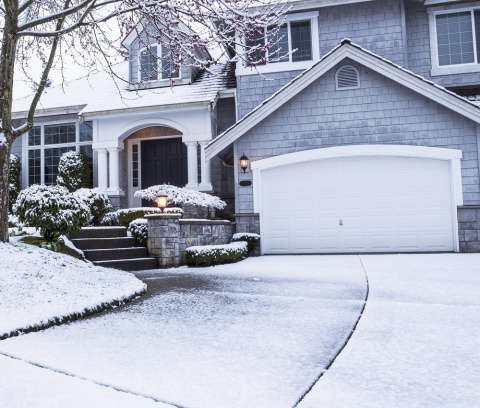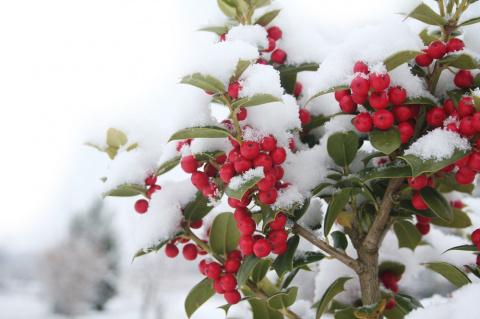When most people think of the typical winter landscape, they immediately conjure images of drab gray dormancy, as many common landscape fixtures such as the lawn, deciduous trees, and many perennial shrubs go dormant in the winter months. However, just because the same plants that instill color in your landscape design in warmer months lose their leaves in the fall and winter doesn’t mean you can’t have color during the colder months. In fact, with the blank canvas of the winter landscape, it’s easier than ever to create a visually stunning look.
When planning your winter landscape design in Johns Creek, GA, remember that less is more thanks to the decreased foliage and activity in the average outdoor space. You can use sparse pops of color or innovative hardscaping to create visual interest and highlight the favorite areas of your yard in the winter months. Keep reading to learn a few ways that you can brighten your landscape in the winter.
Use Hardscaping
Without the support of lush foliage and blooming plants, you may be limited in the winter months when it comes to visual interest. However, you can create nonbiological interest that will endure all seasons through hardscaping and make a dramatic impact on your yard. For example, installing a paver patio, building a stone fireplace, or installing a water feature can bring color and texture to the otherwise gray palette of winter.

Yard art, such as kinetic sculptures or statuary, can also provide colorful points of interest that will captivate observers and offset the loss in color imposed by falling temperatures and seasonal dormancy.
Find Winter Bloomers
Winter-blooming plants are great in the landscape because they step aside to let the spring bloomers dominate during their peak but emerge later when the winter temperatures fall to provide beautiful color and stunning foliage. For winter-blooming perennials, it’s hard to beat camelias for their variety and stunning appearance. Even in the summer, they’ll serve as an excellent dark green backdrop for your spring-blooming flora. If you want to add striking explosions of color throughout the landscape, consider selectively installing clusters of pansies in highly visible locations such as around hardscaping or the bases of large trees. Just a little color will go a long way in the winter, so remember that you don’t have to go overboard.
Color Doesn’t Mean Blooms Only
There are also other ways to introduce color into your winter landscape that go beyond blooms. Many plants, such as hollies and nandina, feature berries that can splash red across your landscape even in the height of winter. Nandina can be especially beautiful since its berries form in cone-shaped clusters that are bigger than the flowers of most blooming plants and trees. Also, you can install trees that feature bark that can create interest, such as river birch, crepe myrtle, or dogwoods. While they may not add bright color, they will create unusual textures that can command the eye of observers.

Add Variegated Evergreens
Most evergreens come in dark green hues, which makes them popular for creating visual backdrops in many winter landscapes. However, there is some variety available when it comes to evergreen color, and those plants can provide a subtle injection of color even in the coldest months. For example, there are blue junipers and other evergreens that have a blue tint, as well as variegated varieties of many evergreens that feature bright yellow variegation to create visual interest. Make sure to explore your options to find additional plantings that can add color without blooms.
If you’re looking for ways to brighten your winter landscape, use these tips to inject color and visual interest—even amongst the gray of the colder months. To learn more ways to add colors to your winter landscape, contact Stoeckig Landscape Group at (770) 831-1790.
